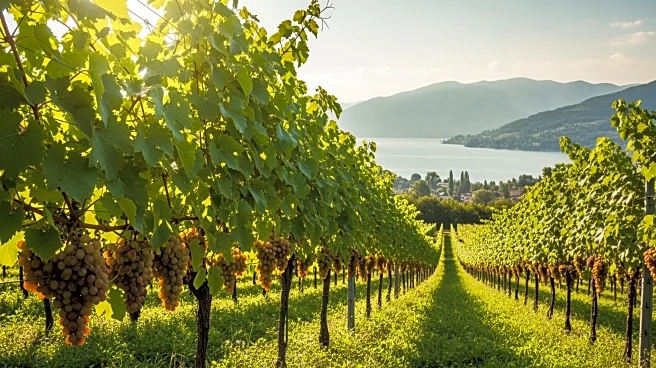What's Happening?
Eternal Flame Falls, located in Chestnut Ridge Park, Erie County, New York, is a unique natural attraction featuring a small, perpetual flame behind a waterfall. This phenomenon occurs due to natural gas seeps that release flammable gases like methane
and hydrogen sulfide from the Hanover Shale formation, dating back to the Devonian period. The waterfall, approximately 30 feet tall, consists of two tiers and flows over shale rock, which is rich in organic matter. The flame, sheltered by a grotto, can be ignited and burns continuously, creating an unusual and captivating sight. The best time to visit is in early spring when meltwater enhances the waterfall's flow, although the flame burns more robustly in the summer.
Why It's Important?
Eternal Flame Falls is significant as it showcases a rare geological phenomenon where natural gas seeps create a continuous flame. This site attracts tourists and geology enthusiasts, contributing to local tourism and education about natural gas formations and geological history. The presence of such a natural wonder highlights the intricate processes of organic matter decomposition and gas formation over millions of years. It also underscores the importance of preserving natural sites that offer insight into Earth's geological past and present unique natural spectacles.
What's Next?
Visitors to Eternal Flame Falls can expect a unique experience, especially during the spring when the waterfall is most active. The site continues to draw interest from both tourists and researchers, potentially leading to increased conservation efforts to preserve its natural beauty and scientific value. Local authorities may consider enhancing visitor facilities and educational resources to accommodate growing interest and ensure the site's protection.
Beyond the Headlines
The Eternal Flame Falls serves as a reminder of the delicate balance between natural beauty and environmental preservation. As interest in such natural phenomena grows, it raises questions about sustainable tourism and the impact of human activity on fragile ecosystems. The site also offers an opportunity for educational programs focusing on geology, natural gas, and environmental science, fostering a deeper understanding of natural processes and the importance of conservation.













